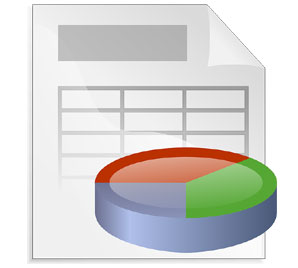Increase Google Crawl Rate: Getting Google To Crawl My Site
Increase Google Crawl Rate
Search engine rankings are not a precise science. The algorithm that enables website ranking depends on multiple components. In this article, we will discuss some useful tricks to increase the Google Crawl Rate for web pages.
Google Search utilizes bots to seek out data and information on sites. This process is referred to as crawling. How to define crawl? The crawl or crawling procedure is how the search engines discover fresh and updated web pages for add them to the index.
Hence, determining the fundamentals of crawling can assist you in identifying if Google even knows that your site exists for the crawling process or not.

Crawling And Indexing Procedures
Both crawling and indexing are procedures that take time and are affected by numerous aspects. So, if your web portal is not undergoing the crawling process, the website design and structure may be an issue.
Many times, websites are momentarily inaccessible when Google tries to crawl. So, cross-checking the crawl details and solving required flaws can better assist you in altering to get your site back to crawling.
Read Also: 5 web design tips for your site.
How Often Does Google Crawl?
It takes around four days to four weeks for your new website to get crawled and indexed through Google. This scope, however, is quite extensive and has been challenged by many SEO experts, who state to have indexed their websites in less than four days.
How Do I Make Out If My Website Is Indexed?
Just enter your site into the Google search box if it’s indexed it should be at the apex of Google results. If you add site: yourdomain.com all of your website pages will be listed which are indexed by Google.
So, your website can only be incorporated in search engine results pages (SERPs) if it falls in the search engine’s index. Otherwise, your clients or prospects will have to type in your URL to locate your website portal. Hence you need an excellent crawling rate of your site to increase visits and inquiries.
Read Also: Secure your site (https://) – An overview of SSL certificates.
We are sharing the most successful ways to amplify site crawl rates and boost visibility in well-liked search engines.
How to Increase Google Crawl Rate
How To Increase And Periodically Boost Your Site’s Crawl Rate
1. Updating Your Website Content Consistently

Content is the most significant criterion for search engines. The websites that get updated on a customary basis are crawled more recurrently. The best way to offer new and fresh content is through publishing an article or blog on your site.
Read Also: Top content formats to boost engagement.
Commonly companies with some kind of content marketing strategy publish at least one blog every week. This strategy is quite straightforward than trying to add new website pages or relentlessly altering your web page content. Static websites are crawled less frequently than those that offer new and better-quality content.
You can add other categories of content such as press releases, case studies, white papers, brochures, and other collateral to your website. Moreover, you can even add other forms of content like videos or audio streams to your website, which can augment your site’s crawling rate.
You can also use social media like adding a Twitter search widget or status widget that can continuously update your website.
2. Generating And Revising Your Website Sitemaps

Regular submissions of sitemaps are the foremost things to make your website swifter through search engine bots.
If you are using WordPress, you can opt for the Google XML sitemap plugin to create dynamic sitemaps. You can use this function, every time you update the website pages and submit them to the Webmaster tool.
3. Staying Away From Copied Or Duplicate Content
Duplicate content reduces crawl rates. Search engines can effortlessly trace copied content and negatively affect the crawling process. It can even have an outcome of a search engine prohibiting or banning your website or worsening your existing ranking.
It is always better to verify your present and new content that they are not copied or duplicated through SEO tools obtainable online. These tools can further assist in authenticating your website content.
4. Interlinking Of Your Website And Blog Pages
Interlinking assists in helping search engine bots in crawling deep pages of your website. When you create a fresh blog post, adding a link to your old and related posts always helps.

5. Optimizing Images And Videos Before Uploading
Images and videos that are optimized just that are searchable as well as displayed in search results. Crawlers don’t read images or explore videos directly like humans.
While using images, ensure alt tags, and offer descriptions for a search engine to enable indexing. The same goes for videos; Google does not like ‘flash’ as it is not able to index it.
6. Getting Better With Your Website Load Time
Crawlers have restricted time for indexing your website pages. So you need to boost your website load speed and have website pages with limited images, videos, and graphics. Also, remember that embedding video or audio can create issues in crawling.
7. Blocking Access To The Insignificant or Useless Pages
Editing on Robots.txt will assist you in preventing bots from crawling unwanted parts of your website. There is no benefit of search engine bots crawling ineffective pages like admin web pages or folders in the back end. Also, there is no requirement for indexing them.
8. Hosting Your Website or Blog On A Trustworthy Server
No business wants Google bots to explore their website blogs or other content during downtime. On the other hand, if your site is down for a longer time, Google crawlers will change its crawling rate. And so you will find it tougher to get your fresh content indexed quickly.
Read Also: Selecting the right web hosting server.

9. Get Better With Server Response Time to boost Google Crawl rate
As per the guidelines from Google, you should trim down your server response time to less than 200ms. If Google is facing a longer load time, there is a distinct probability of your website visitors going through similar issues. And making online visitors wait affects the rankings in the long run.
Also, it doesn’t matter if your website pages are optimized for speediness. If your server response time is sluggish, your pages will be exhibited slowly.
If these are the scenarios, Google will set a pointer on the crawling rate in the Google Search Console. However, you can lay down it to Faster. Besides, you can utilize the hosting resourcefully and advance your site’s cache.
10. Opt For Ping Services to boost Google crawl rate
While adding fresh content to your website, you can use ping services to convey bots about these updates. It is similar to indicating and asking the search engines to verify or check out the new content.
Pinging is a superior practice to follow as it can make an evident variation to how swiftly your web pages get to indexing.
11. Keep Your Website Away From Black Hat SEO Results
If you have used any black hat SEO strategies, you will face the associated results. It’s better to avoid these strategies and tactics. This includes activities like the use of keyword stuffing, unrelated keywords, spamming of content as well as link manipulation methods.
The use of these techniques leads to lowering your site’s crawling. So opt for white hat SEO techniques to boost the Google crawl rate.
12. Work on Generating Quality Links For Your Website
Quality backlinks will enhance the Google crawl rate and better index your website. It is also the most flourishing way to rank in good health and steer more website traffic.

Building organic links, using White hat link-building techniques, and avoiding stealing or purchasing links are needed tactics for long-term success. The most excellent way is to gain backlinks through guest blogging, content marketing, and the use of different resource links.
13. Increasing Social Shares to boost the Google crawl rate
There is no evidence that social shares persuade search ranking, although, they lend a hand to new, clean, and quality content to get indexed swiftly.
Going through the facts, Facebook doesn’t enable bots to crawl data or information that is not public. On the other hand, Twitter doesn’t let any posts or results be crawled.
However, Google and Bingbot can access publicly accessible data and information on social media sites. So, try to get more social shares for your content to have speedy crawling and indexing.

14. Crawling Your Website Before Making Alterations
Google always crawls your site before ranking it and keeps in mind the overall website structure, metadata, and URLs.
So, if you redesign your site without taking into account the current structuring, there are possibilities that Google might not be acquainted with your website. And this will adversely affect your in-progress crawling as well as rankings.
SEO crawling enables you to preview the current structure of your website, making it simpler to map the alterations.
Moving Forward
It is feasible to amplify the Google crawl rate; however, it will not turn out overnight. You have to be tolerant, follow the process, and work as per the requirements. Do let us know if you are utilizing any other tactical approaches to boost the Google crawl rate of your website.
Further, to make sure you are rocking with digital marketing and SEO, get a consulting company like us on your side. We will perform all these significant tasks, along with making your content strategy and digital marketing efforts stand out.





